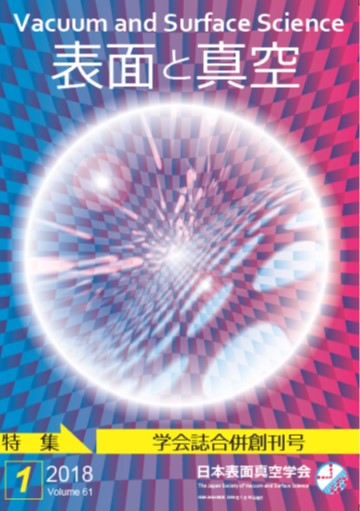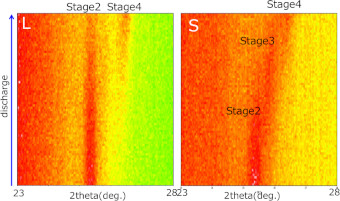Volume 64, Issue 5
Special Feature : Recent Progress in In situ X-ray Analysis
Displaying 1-10 of 10 articles from this issue
- |<
- <
- 1
- >
- >|
Preface
-
Article type: Preface
2021 Volume 64 Issue 5 Pages 205
Published: May 10, 2021
Released on J-STAGE: May 10, 2021
Download PDF (375K)
Special Feature : Recent Progress in In situ X-ray Analysis
-
 Article type: Overview
Article type: Overview
2021 Volume 64 Issue 5 Pages 206-211
Published: May 10, 2021
Released on J-STAGE: May 10, 2021
-
Article type: Current Topics
2021 Volume 64 Issue 5 Pages 212-217
Published: May 10, 2021
Released on J-STAGE: May 10, 2021
Download PDF (4182K) -
Article type: Current Topics
2021 Volume 64 Issue 5 Pages 218-223
Published: May 10, 2021
Released on J-STAGE: May 10, 2021
Download PDF (3215K) -
Article type: Current Topics
2021 Volume 64 Issue 5 Pages 224-229
Published: May 10, 2021
Released on J-STAGE: May 10, 2021
Download PDF (4107K) -
Article type: Current Topics
2021 Volume 64 Issue 5 Pages 230-235
Published: May 10, 2021
Released on J-STAGE: May 10, 2021
Download PDF (3310K) -
Article type: Review
2021 Volume 64 Issue 5 Pages 236-241
Published: May 10, 2021
Released on J-STAGE: May 10, 2021
Download PDF (7900K)
Report
Conference Report
-
Article type: Report
2021 Volume 64 Issue 5 Pages 242
Published: May 10, 2021
Released on J-STAGE: May 10, 2021
Download PDF (305K)
Science Café
Research Abroad
-
Article type: Science Café
2021 Volume 64 Issue 5 Pages 243-244
Published: May 10, 2021
Released on J-STAGE: May 10, 2021
Download PDF (1456K)
News & Trends
-
Article type: News & Trends
2021 Volume 64 Issue 5 Pages 245
Published: May 10, 2021
Released on J-STAGE: May 10, 2021
Download PDF (306K)
- |<
- <
- 1
- >
- >|






